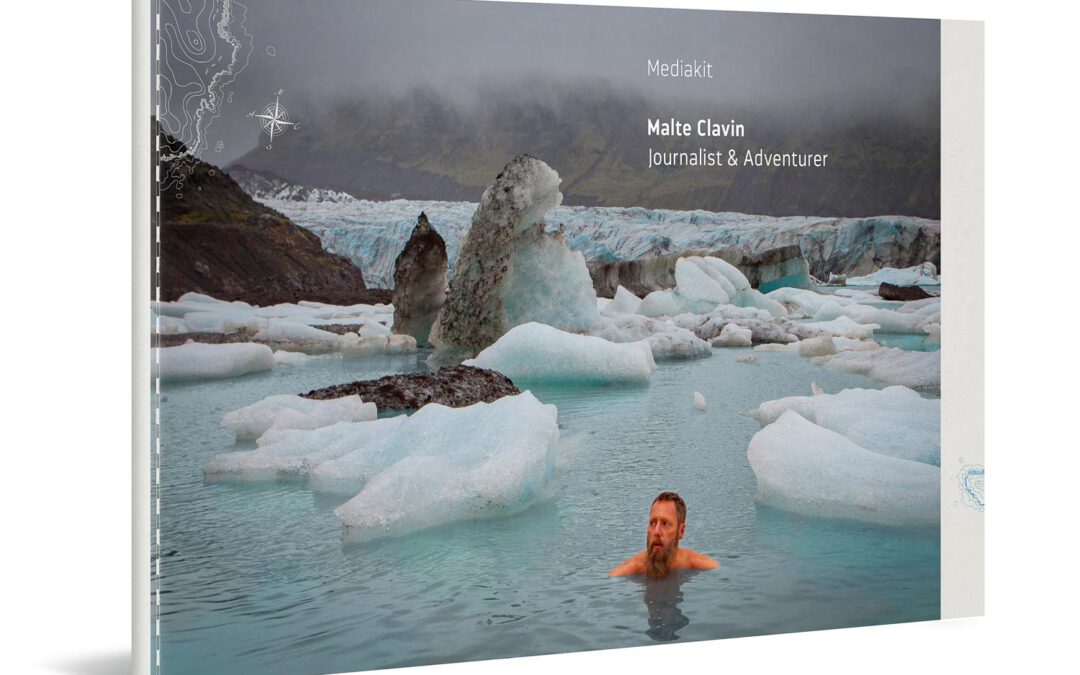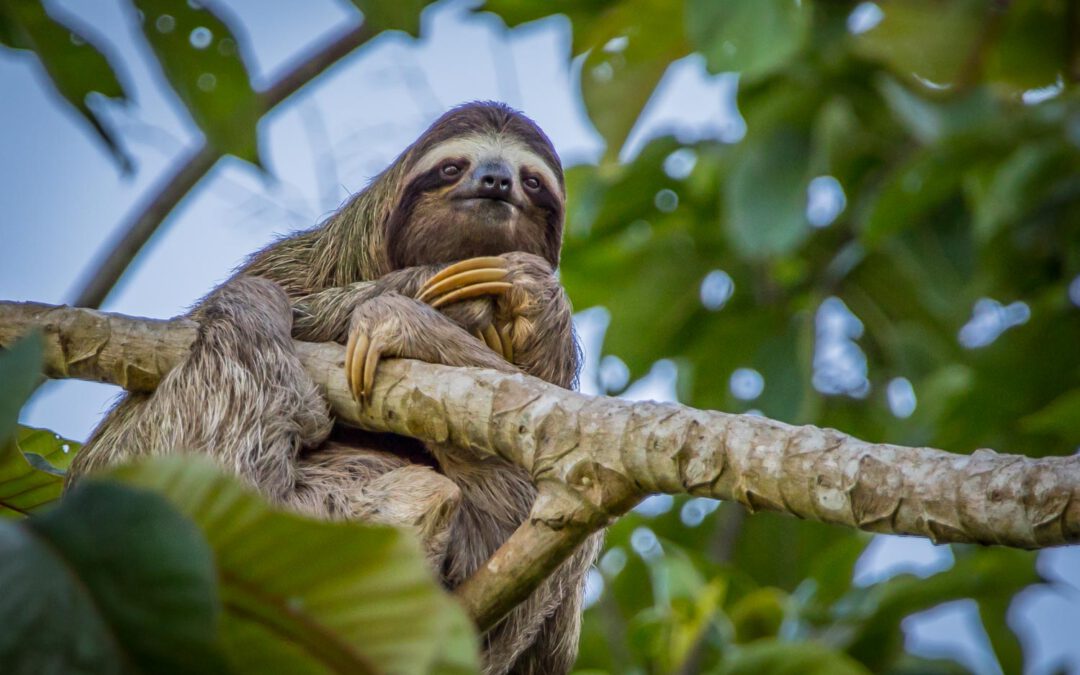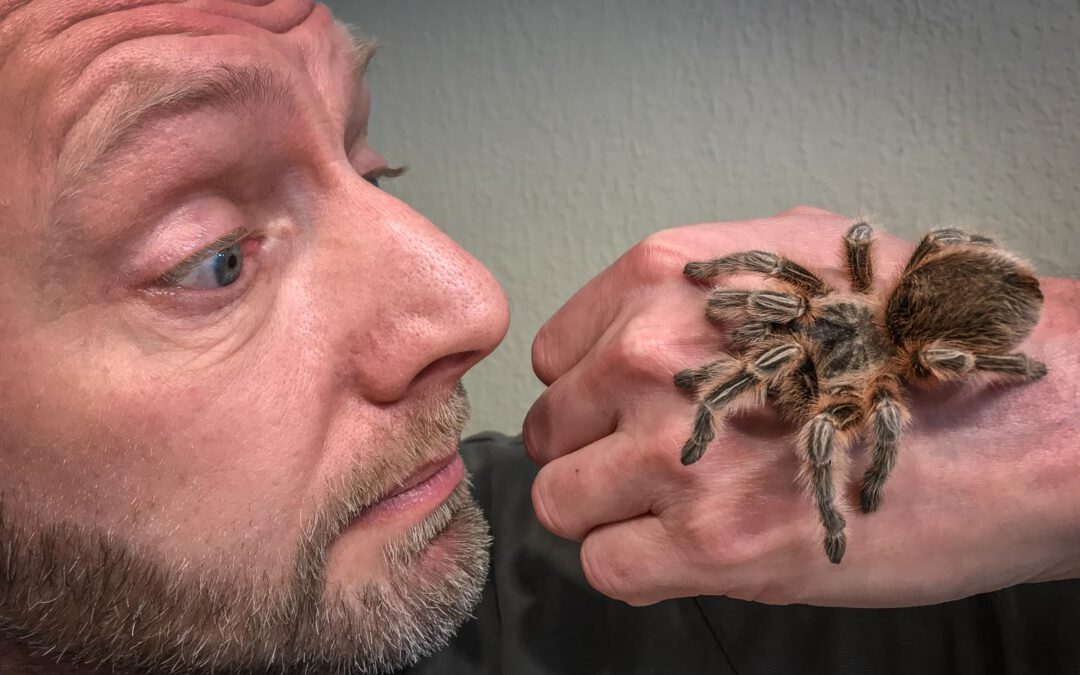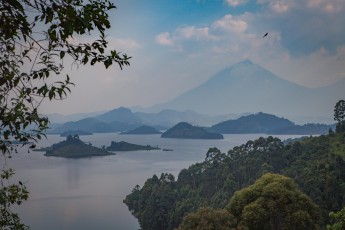
View from Chameleon Lodge across Lake Mutanda towards Rwanda.
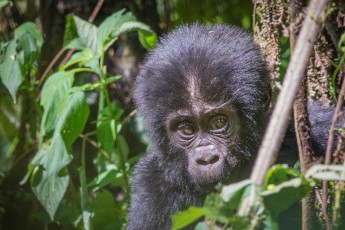
One of the highlights of any trip to Uganda: A visit to the mountain gorillas in the Bwindi Impenetrable Forest. Only a second after this shot, the six-month-old baby gorilla disappears out of sight in the shade of a bush.
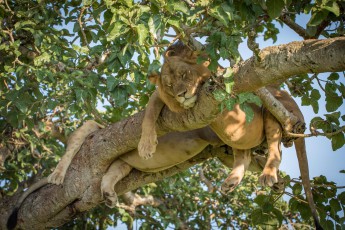
Only half an hour before, a guide of the national park dampened any hope: "I have been in the park every day for the last two weeks. Never once did I get to see a single lion. They must have disappeared over the Congo border." A pinch of luck is also part of a photographer's luggage.
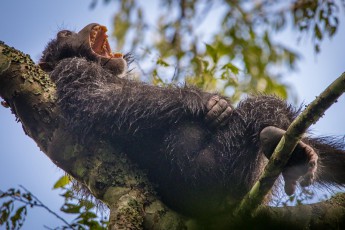
High up in a tree in Kibale National Park, this chimpanzee enjoys the first rays of sunshine after a downpour.
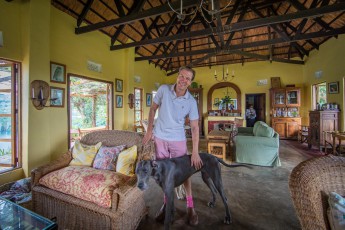
Aubrey Price, owner of Ndali Lodge, one of my favourite places in Uganda. This room in particular exudes has a very special 'explorer's touch' that I love so much. I am also in this photo, but where?
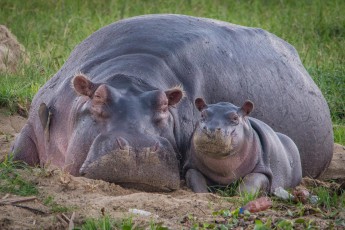
Mother and baby hippo on the banks of the Kazinga Channel. Individual animals weigh up to 4,500 kilograms. 5,000 hippos roam the waters that connect Lake George and Lake Edward. It is the world's largest population of hippos.
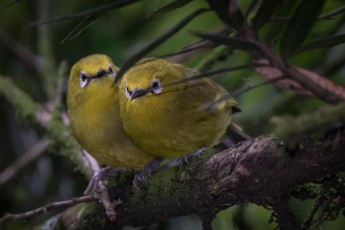
A pair of Nothern Yellow White Eyes in the Rwenzori Mountains. Only once did I catch sight of a pair, only for a few seconds did they nestle close together.
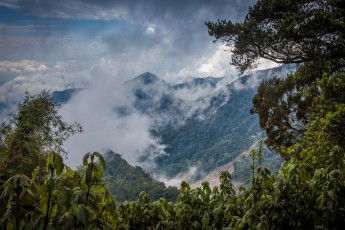
The Rwenzori - one of the most fantastic landscapes I've ever walked through - while only walking through a very small part, mostly primary rainforest, like here. The picture shows scars from landslides. Permanent rain washes away the very steep terrain, and boulders pelt down the valley every day.
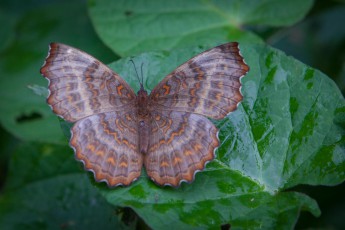
An unknown butterfly in the Rwenzori. Uganda is home to over 1,230 species, 31 of which are endemic.
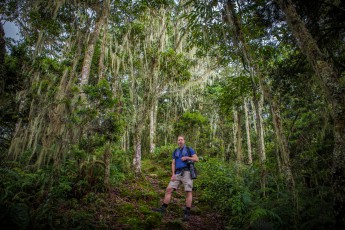
Rwenzori. Above the primary rainforest we walk through the 'Heather Zone' with up to 8 metre high Erica trees. These and many other tree species are covered with lichens. These are purity indicators: the more lichens, the cleaner the air.
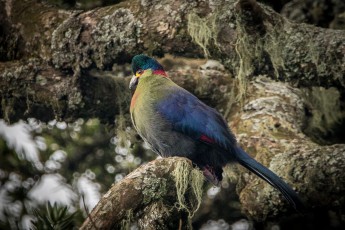
Probably the most beautiful bird of my Uganda trip: the Rwenzori Touraco. As the name suggests, it is exclusively native to the Rwenzori (=endemic). In flight, you can marvel at its crimson wing spots from below (in the picture you can glimpse them under its blue plumage). What a nature experience!
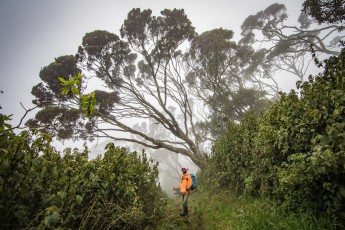
Cloud-covered, deserted, nature-steeped - that's how I experience the Rwenzori. Guide Stephen Kule comes from a village at the foot of the Rwenzori, he infects me with his obsession for mountains - and especially birds.
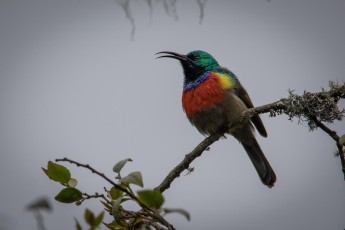
In three days, only once I had a clear view of the Rwenzori Double-Collared Sunbird, one of 17 endemic bird species of Rwenzori.
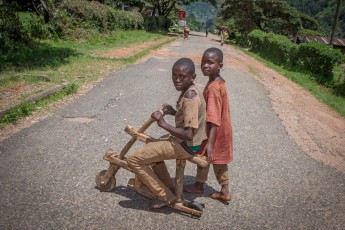
In Kilembe, the last village before the Rwenzori National Park, toys are scarce, the money is used for more important things in life. Therefore, these two boys built their scooter out of wooden beams and found objects.
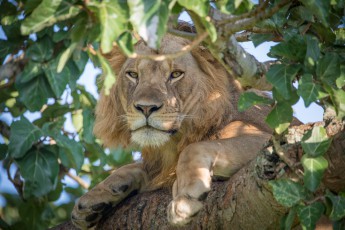
Queen Elizabeth National Park is one of the few places in the world where lions climb trees during the day. This male lion briefly interrupts his sleep, glances at me, and dozes off again a few moments later.
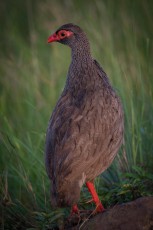
Handsome Francolins are considered extremely shy and therefore difficult to observe. The best chances are when foraging - as here - in the early morning.
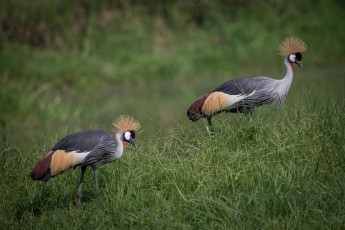
The South African crowned crane is Uganda's national animal. This pair trudges through the garden of Enjojo Lodge. It is mating season, the male on the right is courting the female. I watch and take pictures - this time, for once, from the comfort of my breakfast table.
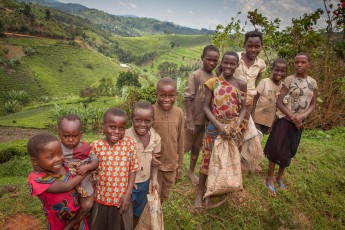
In the middle of the tea growing area of Uganda. At almost every photo stop I am quickly surrounded by curious and friendly children.
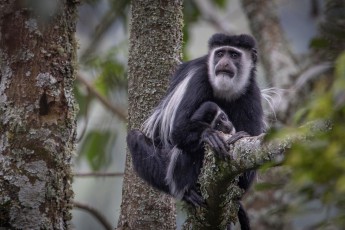
A Black-and-white Colobus monkey with young. Their deformed, short thumbs is a genetic adaptation to living in trees. Their long white 'coat hairs' are also characteristic.
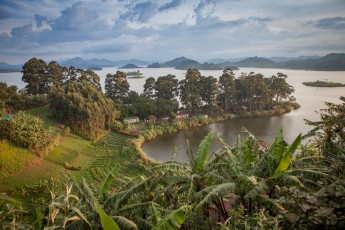
Evening atmosphere at Lake Mutanda.
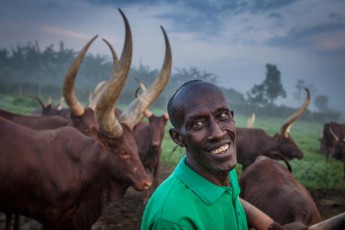
Emburara Farm, early morning: John Karuhanga (60) is closely connected to his Ankole-Watusis (cattle), he knows name, age and pedigree of each of the 45 animals.
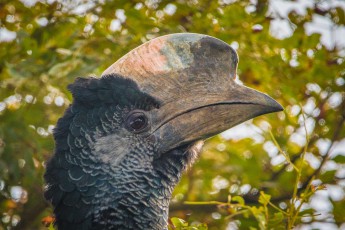
A Black-and-white-casqued hornbill. In the breeding season, the female walls up the breeding cavity with clay - except for a narrow gap. Through this gap, the male provides her with food.
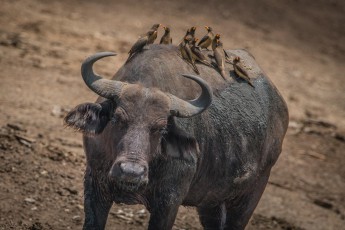
Kazinga Channel: A buffalo with 11 yellow-billed oxpeckers. They eat mainly insects, ticks and other skin parasites - over 100 parasites in one day. They also often spend the night on the back of a mammal.
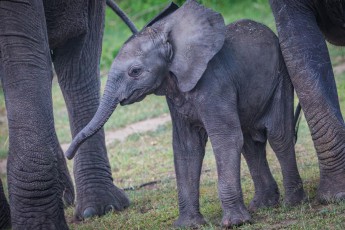
Queen Elizabeth National Park: A young elephant in the protection of the herd.
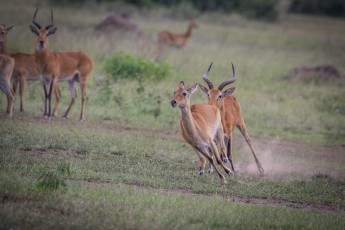
Queen Elizabeth National Park: Mating season for impalas.
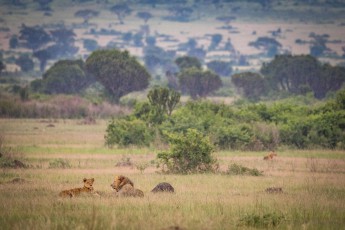
Queen Elizabeth National Park: A lion couple is resting for the night hunt.
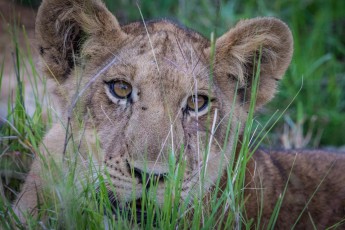
A lion cub in Queen Elizabeth National Park. Males do not grow a mane until they are 3 to 4 years old.
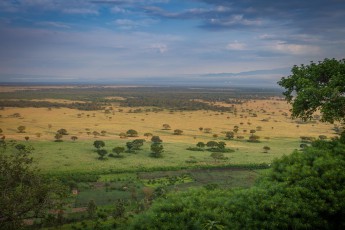
I would have liked to stay here longer: The view from Katara Lodge over Queen Elizabeth National Park - the Rwenzori mountain range on the right is about 30 kilometres away.
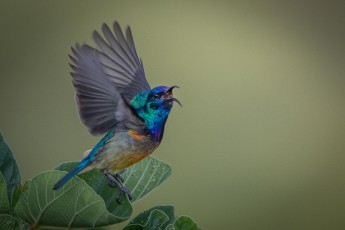
Maybe a little sensation!? The Orange-breasted Sunbird is considered endemic to the south coast of South Africa. But I catch this specimen early in the morning in the garden of Katara Lodge at Queen Elizabeth National Park.
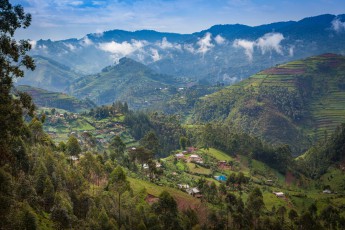
You could call it the 'Switzerland of Uganda': A tea-growing area at an altitude of 1,800 metres, not far from the Bwindi Impenetrable Forest.
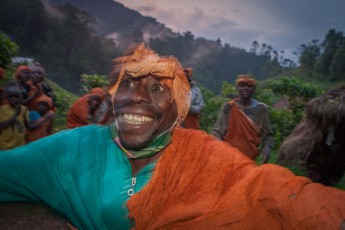
This is the 'Rhythm of Africa'! The shaman of the Batwa community gives himself over to the groove of the chants and drums of his village - one more photo - and then I'm all in!
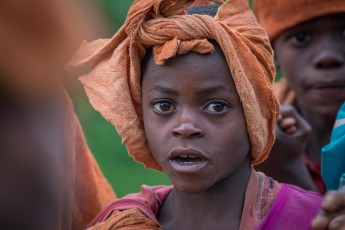
A few minutes before: A girl from the Batwa community sings herself in.
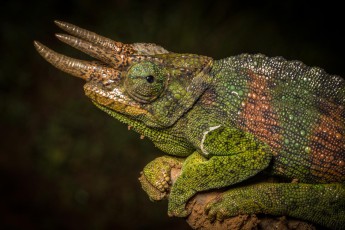
On the way back to our lodge, it is dark already. A couple of boys present us with a stick, we don't understand anything. Then we discover this breathtaking beauty at the end of the stick: a Three-horned chameleon!
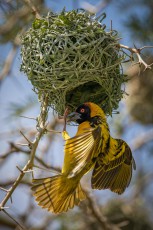
It's mating season for the Black-necked weavers! There are about 40 nests hanging in this tree. Just as many males loudly scramble for the favour of the females - who then decide on the designers of the most beautiful nests.
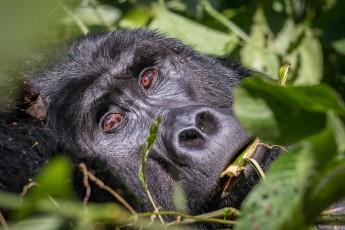
A look I will never forget: The serene elemental power of a silverback - nothing can compare to it. Unfortunately, our visit was abruptly interrupted shortly before the end of the hour...
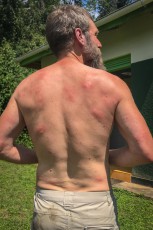
... because one of us has scared off attacking forest wasps! After about 15 minutes of panic-stricken running - more like stumbling, tumbling, falling - through the bush, we were finally able to get rid of the beasts. I suffered about 40 stings. Two days later everything had swollen up again.
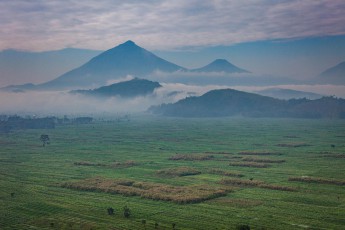
Farewell from Uganda: A last view over the cultivated landscape with yam, tomato, bean and potato fields. In the background the Rwandan volcano Karisimbi (highest elevation) and to the right the Mikeno volcano (Congo).
